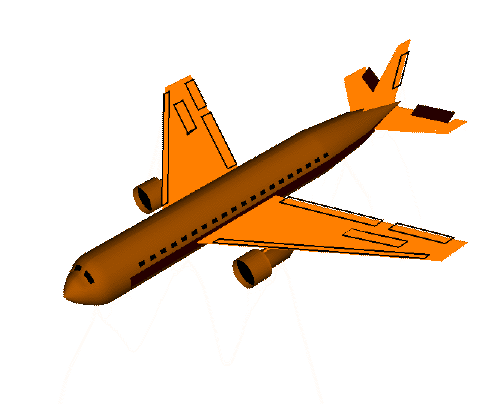
|
|
Glenn
|

|
|
Glenn
|

In flight, any aircraft will rotate about its center of gravity, a point which is the average location of the mass of the aircraft. We can define a three dimensional coordinate system through the center of gravity with each axis of this coordinate system perpendicular to the other two axes. We can then define the orientation of the aircraft by the amount of rotation of the parts of the aircraft along these principal axes. The pitch axis is perpendicular to the aircraft centerline and lies in the plane of the wings. A pitch motion is an up or down movement of the nose of the aircraft as shown in the animation.
The pitching motion is being caused by the deflection of the elevator of this aircraft. The elevator is a hinged section at the rear of the horizontal stabilizer. There is usually an elevator on each side of the vertical stabilizer. The elevators work in pairs; when the right elevator goes up, the left elevator also goes up.
As described on the shape effects slide, changing the angle of deflection at the rear of an airfoil changes the amount of lift generated by the foil. With greater downward deflection, lift increases in the upward direction. With greater upward deflection, lift increases in the downward direction. The change in lift created by deflecting the elevator causes the airplane to rotate about its center of gravity. The pilot can use this ability to make the airplane loop. Or, since many aircraft loop naturally, the deflection can be used to trim or balance the aircraft, thus preventing a loop.
On many aircraft, the horizontal stabilizer and elevator create a symmetric airfoil like the one shown on the left of the shape effects slide. This produces no lift when the elevator is aligned with the stabilizer and allows the combination to produce either positive or negative lift, depending on the deflection of the elevator. On many fighter planes, in order to meet their high maneuvering requirements, the stabilizer and elevator are combined into one large moving surface called a stabilator. The change in force is created by changing the inclination of the entire surface, not by changing its effective shape.
A still slide of this animation is also available. It looks like this:

Navigation..
byTom
Benson
Please send suggestions/corrections to: benson@grc.nasa.gov